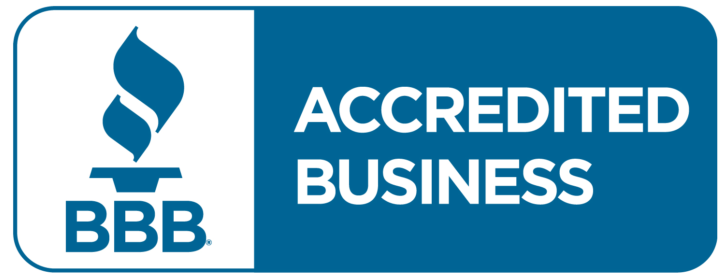It may be required by law, granted unilaterally by employers, or obtained through collective bargaining. Employers’ payments for fringe benefits are included in employee-compensation costs and therefore are not usually liable to corporate income tax. Thus, with the same amount of money, employers can obtain more benefits for employees and can also take advantage of lower group rates for insurance. Fringe pay refers to the non-wage benefits that employees receive as part of their total compensation package.
EAP Provider Denies Breaching Privacy and Letting Corporate Clients Listen to Confidential Calls
They outline the minimum standards for fringe benefits, preventing exploitation and ensuring that employees receive a fair share of additional perks beyond their basic salary. The IRS provides a publication on employee fringe benefits, which is targeted at employers, though employees may benefit from it as well. Fringe benefits are a type of compensation provided to an employee outside of his normal wage or salary.
Overall, fringe benefits are a vital tool for building a motivated, stable, and efficient workforce, ultimately driving the company’s success and growth. If you do not have enough HCM capabilities in-house, a Professional Employer Organization (PEO) can help manage fringe benefits for your employees. Fringe benefits are evolving with trends driven by technology, demographics, and economic pressures. Digital tools, such as apps for real-time benefits customization, are streamlining benefits management and improving employee satisfaction.
Advantages of Fringe Benefits
- You may finish employment between 1 April and 30 June, and your employer has provided you with fringe benefits exceeding a total of $2,000 during this time.
- Competition can present an issue for a number of companies, not only in the realm of product or service similarity or mission focus, but also in terms of employee retention.
- Fringe benefits in the UK are taxable, but there are a few exceptions.
- The prevalence of fringe benefit programs increased sharply during World War II because controls on this type of compensation were less stringent than controls on wages.
- So when an employer lists benefits in their job description, or you read about benefits in an employer review, they’re talking about fringe benefits.
For example, working condition benefits are taxable to the extent that they are for personal use. If an employee is given a laptop, the taxable income would be the percentage of the laptop’s fair market value devoted to personal use. If 80% of its use is personal, the taxable income is 80% of the value of the computer. Employers evaluate the costs of benefits, including direct expenses like insurance premiums and indirect costs such as administrative overhead. Tax incentives, like those for dependent care programs, also influence benefit structures.
Fringe benefits go beyond the paycheck, offering added perks like health insurance, flexible work hours, and employee discounts. They contribute to attracting and retaining top talent and making your workplace stand out. Employers use fringe benefits to attract and retain top talent, boost morale, and improve productivity. Employees value fringe benefits because they can help them save money, improve their health and well-being, and have a better work-life balance.
- Non-cash benefits, like personal use of a company car, are also subject to payroll taxes.
- Other exemptions are not available to highly compensated employees if the benefits are given to them but not rank-and-file employees.
- For taxation purposes, fair market value is typically regarded as whatever a willing buyer would pay for an item of equal value.
For employers, comprehensive fringe benefits can differentiate them in competitive labor markets and may offer tax advantages as deductible business expenses. Fringe benefits, also known as employee benefits, are additional compensations provided by an employer beyond an employee’s direct wages or salaries. Monetary fringe benefits include bonuses, allowances, and retirement contributions. Non-monetary fringe benefits include health insurance, paid time off, and employee discounts.
Any benefit legally required to be offered would not be considered a fringe benefit. As noted, fringe benefits for employees can take the form of property, services, cash, or some cash equivalent. They can also include non-tangible benefits, such as the use of a company car or flex time built into a work schedule. And fringe benefits can set you apart, help bring in the best talent, and keep them around. It’s not just about the paycheck; it’s about creating an all-around great work experience.
Valuing Fringe Benefits
Fringe benefits enable fringe pay meaning businesses to attract, recruit, motivate and retain highly skilled employees. Fringe benefits also result in increased loyalty and satisfaction among employees, thereby decreasing the turnover rate. In addition, you may choose to provide unique fringe benefits to attract good employees.
Fringe benefits will include things like support for mental health, wellness programs, and ways to balance work and life. What “fringe benefits” will you provide beyond the paycheck, and how can you ensure they’re tax-deductible? This article is your go-to resource for understanding everything you need to know. Fringe benefits can be expensive for employers to provide, and they may not be affordable for all businesses.
They go beyond the basic salary to include various perks that can improve an employee’s overall compensation package. Retirement plans, such as 401(k) and 403(b), allow employees to save for retirement on a tax-deferred basis, with many employers matching contributions. For 2023, contribution limits are $22,500 for individuals under 50, with an additional $7,500 for those over 50. Employer contributions are deductible business expenses, while employee contributions reduce taxable income. Employees should also consider vesting schedules when planning for retirement to maximize employer contributions. In the future, companies will focus more on making sure employees feel good.
Withholding and Payroll Taxes
It’s like having a personal trainer for your professional growth, ensuring you stay fit and relevant in your field. Improve an employee’s overall well-being, job satisfaction, and loyalty. Fringe benefit rates vary by organization, industry, and employee, but employers can use them to gauge the total labor cost of their workforces. They play a vital role in attracting top talent and keeping current employees happy and engaged.
This means that benefits should not favor specific groups of employees over others. The regulations often emphasize equal opportunities for all, promoting an inclusive workplace culture. These perks go beyond the paycheck, making the work experience more than just a 9-to-5 routine. As an employer, it’s essential to have every advantage when you’re trying to get top talent.
Common fringe benefits are basic items that are often included in hiring packages. The importance of employee benefits, in terms of their strategic value, can’t be overstated. Many small business owners understand that simply meeting the legally required minimum benefits offerings for employees may not be in the company’s best long-term interests. For many employees (and prospective employees), a business’s benefits package can be a significant factor in deciding whether to accept a job offer. The lack of fringe benefits is also a top reason why employees may opt to leave a job.

